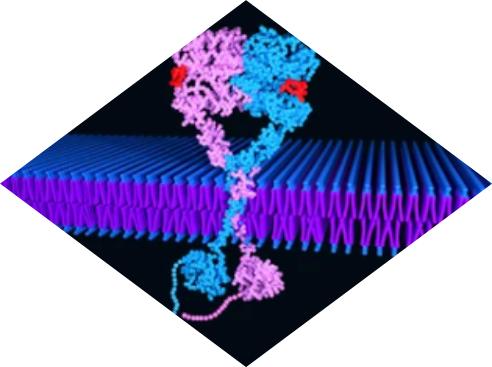TGF-beta Family
Creative BioMart TGF-beta Family Product List
Immunology Background

Overview of EGF Ligands
Epidermal growth factor (EGF) has long been known for its role in promoting the proliferation of intestinal epithelial cells. The EGF family of ligands includes eleven structurally related proteins, namely EGF, transforming growth factor α (TGF-α), amphiregulin (AREG), epigene (EPGN), heparin-binding EGF-like growth factor (HB-EGF), epiregulin (EREG), betacellulin (BTC), and the neuregulins (NRG1-4). They can regulate physiological processes such as cell proliferation, differentiation, migration, and survival by binding to the EGF receptor (EGFR) and activating multiple signaling pathways.
Through recent studies, it has been found that as mesenchymal stem cell growth factors, members of the EGF family not only play an essential role in cell proliferation, differentiation, and development but also show potential applications in the fields of tissue repair, regenerative medicine, and cancer. Using various technical approaches, such as recombinant protein technology, genetic engineering technology, and tissue engineering, researchers have conducted in-depth studies on the functions and mechanisms of the EGF family, to reveal their mechanisms under different physiological and pathological conditions, as well as delve deeper into the mechanisms of the EGF family's interactions with stem cells, to provide a theoretical and practical basis for their applications in stem cell therapy and tissue engineering.
Research Areas of EGF Ligands
EGF (epidermal growth factor) and other related EGF receptor-associated growth factors (EGFRs) belong to a group of important proteins that regulate cell proliferation, differentiation, and survival in living organisms. As an important mesenchymal stem cell (MSC) growth factor, EGF ligands play a key role in the biological process of MSC. Below is a detailed description of the areas of research on EGF ligands as MSC growth factors:
- Proliferation and growth of MSCs
EGF ligands stimulate MSC proliferation and are therefore widely used in studies of MSC amplification and growth. These growth factors activate downstream signaling pathways such as PI3K-Akt and MAPK/ERK by binding to the EGF receptor, which promotes the cell cycle process and facilitates cell proliferation.
- Differentiation of MSCs
EGF ligands also have a significant effect on the differentiation process of MSCs. During the differentiation of MSCs into specific cell types (e.g. osteoblasts, chondrocytes, or adipocytes), EGF ligands can act as inducible differentiation factors to promote differentiation. These growth factors regulate MSC differentiation by activating downstream signaling pathways such as Wnt, BMP, and Notch.
- Survival and anti-apoptosis of MSCs
EGF ligands play an essential role in MSC survival and anti-apoptosis. They provide signals required for cell growth and survival and inhibit the activation of the apoptotic pathway. By regulating Bcl-2 family members and modulating caspase activity, EGF ligands help maintain MSC survival and function.
- Migration and therapeutic effects of MSCs
EGF ligands are also involved in regulating the migration process of MSC. They can enhance MSC migration by regulating relevant signaling pathways such as cytoskeleton, extracellular matrix degradation, and downstream chemokines. Based on this property, EGF ligands have been applied in the study of therapeutic effects of MSC, such as tissue repair and regeneration.
- Clinical applications
EGF ligands are widely used in clinical research as MSC growth factors. For example, in tissue engineering, EGF ligands can accelerate the process of tissue repair and regeneration by promoting MSC proliferation and differentiation. In addition, the applications of EGF ligands involve tumor therapy, trauma repair, and anti-aging.
To summarize, EGF ligands have essential research value as MSC growth factors in the proliferation, differentiation, survival, and migration of MSC. An in-depth study of its mechanism of action and functional characteristics can help to understand the biological process of MSC further and provide new therapeutic strategies and methods for clinical application.

